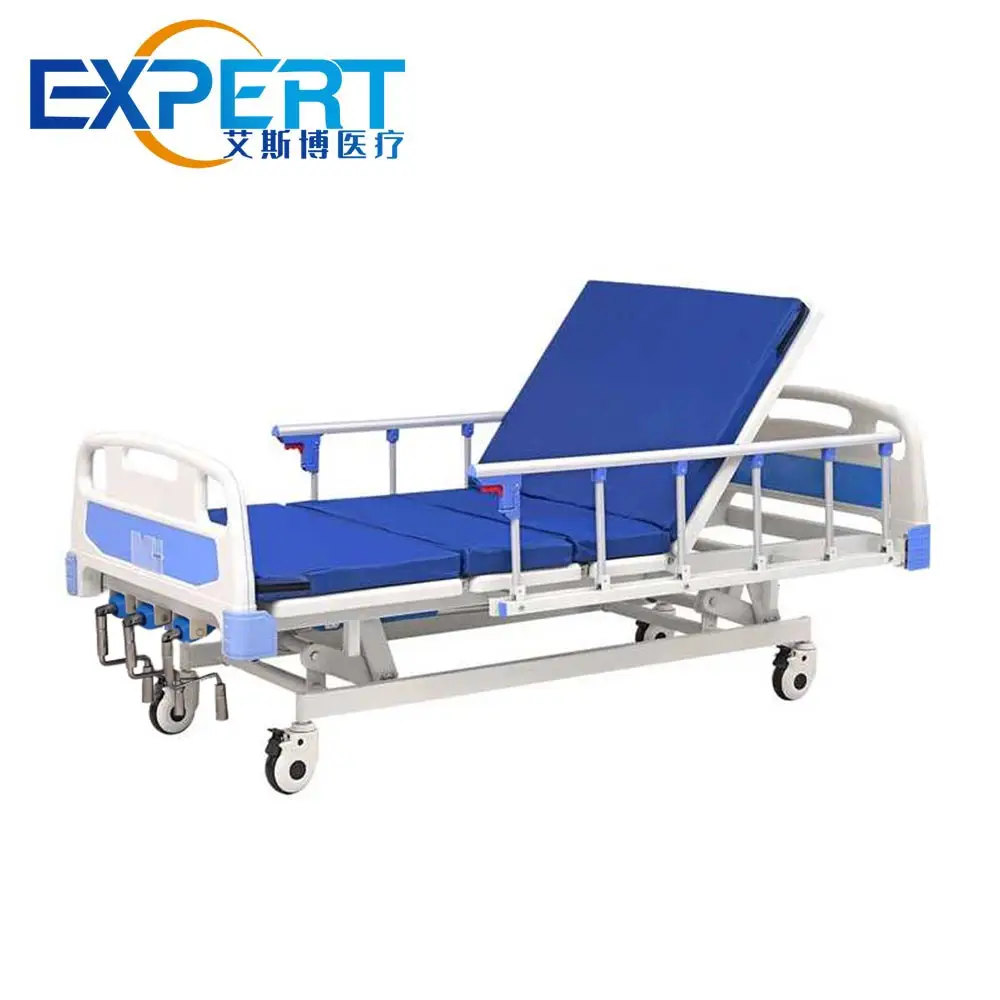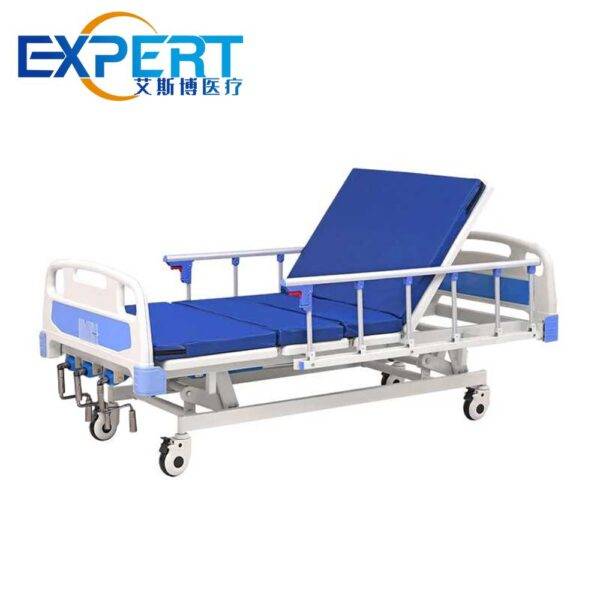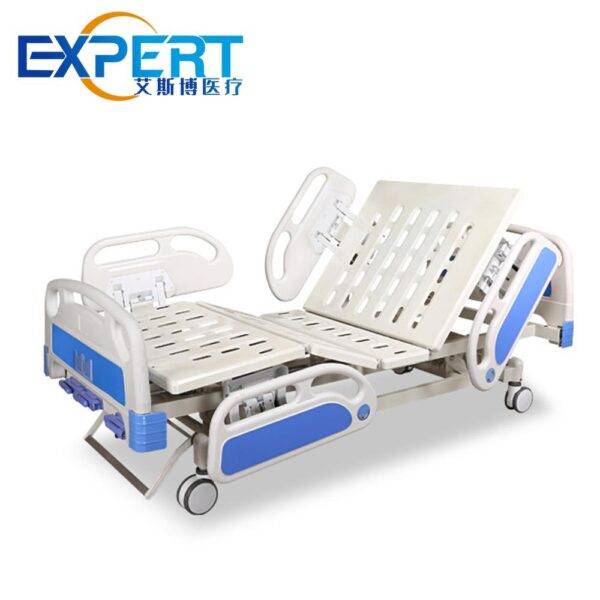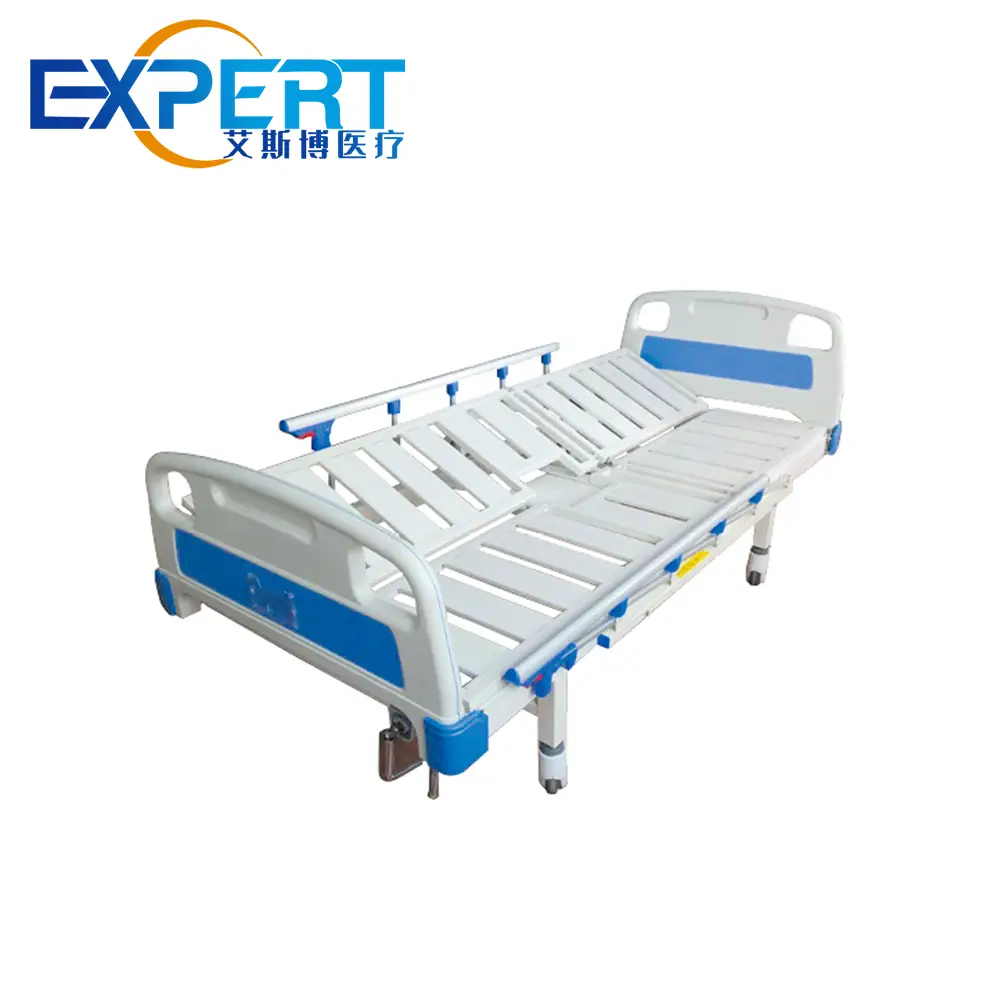Die Anschrift
304 Nordkardinal St.
Dorchester Center, MA 02124
Arbeitsstunden
Montag bis Freitag: 7:00 - 19:00
Wochenende: 10:00 - 17:00
Die Anschrift
304 Nordkardinal St.
Dorchester Center, MA 02124
Arbeitsstunden
Montag bis Freitag: 7:00 - 19:00
Wochenende: 10:00 - 17:00

Krankenhausbetten mit Handkurbel haben sich als praktische Wahl für Gesundheitseinrichtungen herausgestellt, die nach kostengünstigen Lösungen ohne Kompromisse bei der Funktionalität suchen.

In the realm of healthcare, the selection of appropriate medical equipment is paramount to ensuring patient comfort and safety. Hand-cranked hospital beds have emerged as a practical choice for healthcare facilities seeking cost-effective solutions without compromising functionality. This blog delves into the myriad benefits of hand-cranked hospital beds, highlighting their practicality and versatility in enhancing patient care.
Hand-cranked hospital beds are designed with simplicity and functionality in mind, offering manual adjustment mechanisms for height, backrest, and knee elevation. Unlike their electric counterparts, these beds rely on manual operation, making them suitable for environments with limited resources or intermittent power supply. Despite their basic design, hand-cranked beds provide essential features to meet the needs of patients in various healthcare settings.








Kosteneffektivität: Hand-cranked hospital beds are a cost-effective alternative to electric beds, making them accessible to healthcare facilities with budget constraints. Their lower upfront cost and reduced maintenance requirements contribute to long-term savings without compromising patient care.
Zuverlässigkeit: With manual adjustment mechanisms, hand-cranked beds offer reliable performance even in the event of power outages or mechanical failures. This inherent resilience ensures uninterrupted patient care and peace of mind for healthcare providers.
Benutzerfreundlichkeit: Hand-cranked beds are intuitive to operate, requiring minimal training for healthcare staff. The straightforward design allows for quick adjustments to accommodate patient needs, promoting efficiency in caregiving tasks.
Table: Comparison of Hand-Cranked vs. Electric Hospital Beds
| Besonderheit | Krankenhausbett mit Handkurbel | Electric Hospital Bed |
|---|---|---|
| Adjustment Mechanism | Handbuch | Elektrisch |
| Kosten | Lower upfront cost | Höhere Vorlaufkosten |
| Machtabhängigkeit | NEIN | Ja |
| Maintenance Requirements | Minimal | Regular |
| Benutzerfreundlichkeit | Intuitive | Requires training |
Hand-cranked hospital beds are versatile and find use in a variety of healthcare settings:
Hospital Wards: Especially in areas where electrical outlets are limited.This can make it challenging to keep all of our devices charged and ready to use throughout the day.
Emergency Medical Services: For transport due to their lightweight and ease of use.They are also durable and can withstand rough handling during transportation. Additionally, their compact size allows for easy storage when not in use.
Remote Clinics: In areas with unreliable electricity or where motorized beds are less practical.Consider using manual adjustable beds that can be easily operated without the need for electricity. These beds provide a cost-effective and efficient solution for individuals in areas with limited access to power or where motorized beds may not be suitable. With simple mechanisms that allow for easy adjustments, manual beds offer a reliable alternative for achieving comfort and support while sleeping or resting.
Häusliche Krankenpflege: For patients who require a hospital bed at home but do not need advanced features.The Basic Semi-Electric Hospital Bed is the perfect solution. With easy-to-use controls for adjusting the head and foot of the bed, as well as a manual crank for adjusting the bed height, this bed provides essential functionality without any unnecessary frills. Its sturdy construction and comfortable mattress ensure that patients can rest and recover in the comfort of their own home.

Hand-cranked hospital beds play a crucial role in enhancing patient care by providing essential features to promote comfort, safety, and mobility. Their adjustable functions allow for optimal positioning to prevent pressure ulcers, facilitate patient transfers, and support rehabilitation efforts. Moreover, the simplicity of manual operation fosters patient independence and empowerment, contributing to overall well-being and satisfaction.
In conclusion, hand-cranked hospital beds offer a practical and cost-effective solution for healthcare facilities seeking reliable patient care equipment. Their simplicity, reliability, and affordability make them a preferred choice in various healthcare settings, from hospitals to long-term care facilities. By understanding the benefits of hand-cranked beds, healthcare providers can make informed decisions to optimize patient care while maximizing operational efficiency.
Are hand-cranked hospital beds suitable for all patient populations?
Yes, hand-cranked beds are designed to accommodate a wide range of patients, including those with mobility limitations or specific medical conditions.
How durable are hand-cranked hospital beds?
Hand-cranked beds are built to withstand regular use and are constructed from sturdy materials to ensure longevity and reliability.
Can hand-cranked hospital beds be customized with additional features?
Some models may offer optional accessories or attachments to enhance functionality, such as side rails, IV poles, or patient positioning aids.
Do hand-cranked hospital beds require special maintenance?
Routine inspections and lubrication of moving parts are recommended to ensure optimal performance and prolong the lifespan of hand-cranked beds.
Are hand-cranked hospital beds compatible with electronic monitoring systems?
While hand-cranked beds may not have integrated electronic features, they can typically accommodate external monitoring devices or accessories for patient monitoring purposes.